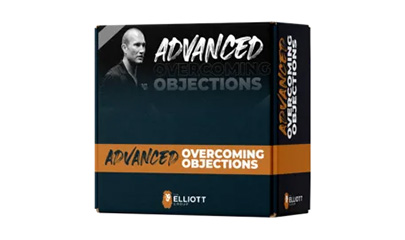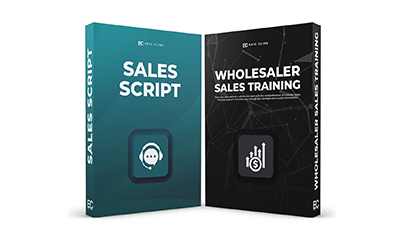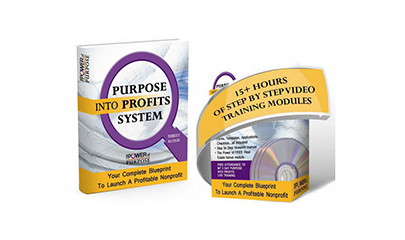-
×
 Licensing Secrets By Ken Kerr
1 × $23,00
Licensing Secrets By Ken Kerr
1 × $23,00 -
×
 Foodtech Business Model By Daniel Pereira - The Business Model Analyst
1 × $5,00
Foodtech Business Model By Daniel Pereira - The Business Model Analyst
1 × $5,00 -
×
 Master Modeling Cosmetics in Blender 3.1 (Intermediate Course for 3D Product Modeling) By Wenbo Zhao
1 × $23,00
Master Modeling Cosmetics in Blender 3.1 (Intermediate Course for 3D Product Modeling) By Wenbo Zhao
1 × $23,00 -
×
 The 4-Day MBA VT System 2023 By Keith Cunningham
1 × $5,00
The 4-Day MBA VT System 2023 By Keith Cunningham
1 × $5,00 -
×
 Behavioral Couples Therapy With Richard Stuart
1 × $8,00
Behavioral Couples Therapy With Richard Stuart
1 × $8,00
Sales Tactics & Strategies By Daniel Pereira – The Business Model Analyst
$19,00 $5,00
File size: 3.44 MB
Delivery time: 1-12 Hours.
Media Type: Ebook
SKU: KOB.45897TWAC3PVO
Category: Business
Tags: Daniel Pereira, Sales Tactics, Strategies, The Business Model Analyst
Sales Tactics & Strategies: Unlocking the Secrets to Successful Selling by Daniel Pereira – Digital Download!
Let’s embark on a captivating adventure to uncover remarkable insights that spark your curiosity and elevate your understanding
Sales Tactics & Strategies By Daniel Pereira – The Business Model Analyst
Overview

Daniel Pereira’s book Sales Tactics & Strategies: Unlocking the Secrets to Successful Selling
Knowledge is power when it comes to being an expert in the art of selling. This fact is summed up by savvy business model analyst Daniel Pereira in his perceptive manual “Sales Tactics & Strategies.” Written with entrepreneurs, sales professionals, and analysts in mind, this book delves deeply into the important distinction between sales tactics and strategies, uncovering successful techniques that have helped businesses succeed. With its captivating story and useful strategies, Pereira’s book is more than just a manual—it’s a road map for attaining long-term success in the dynamic field of sales.
The Distinction Between Strategies and Tactics in Sales
It’s like untangling the threads of a complicated tapestry when you know the difference between sales tactics and strategy. Sales tactics are the instruments and strategies used to clinch a deal; they can be thought of as the discrete threads, the instantaneous activities that can result in swift wins. On the other hand, the strategic framework and overall design that these approaches function inside are known as sales strategies. According to Pereira, a successful sales campaign is a mutually beneficial partnership in which both parties benefit and educate one another.
To further understand this, consider a sports team. The strategy covers the team’s general game plan and how they plan to outmaneuver their opponents, while the tactics are the specific plays that players make throughout the game. According to Pereira, “Tactics can be misguided, leading to ineffective outcomes, if strategy is not clearly understood.”
Practically speaking, companies might use the following frameworks to outline their sales initiatives:
- Sales strategy: long-term objectives and vision (e.g., brand positioning, market expansion)
- Daily actions intended to close deals are known as sales tactics (e.g., cold phoning, email marketing).
This knowledge acts as a starting point for business owners looking to improve their sales strategies, assisting them in avoiding the pitfalls of pursuing strategies without a clear objective.
Effective Sales Techniques: Advice from Business Executives
Pereira uses interesting case examples from well-known businesses like HubSpot and Shopify to highlight the value of successful sales tactics. These examples show that every company can develop strong sales tactics that work in the current market environment, making them inspiration for companies of all sizes.
One of the best examples of a successful tactic that has revolutionized sales procedures in several industries is HubSpot’s inbound marketing methodology. HubSpot has developed a devoted clientele that thrives on the genuineness of their brand by emphasizing the creation of valuable content over pushy sales techniques. Conversely, Shopify is a prime example of how a platform-based sales approach can work, using its ecosystem to help small and medium-sized businesses thrive online.
It is evident from these success stories that exceptional growth may result from strategic alignment with customer needs combined with a dedication to quality and user experience. According to Pereira, businesses need to assess their distinct market positions and develop customized tactics that appeal to their target markets.
Crucial Components of Effective Sales Strategies:
- Putting the needs and preferences of the client first is known as the customer-centric approach.
- Value Proposition: Clearly stating the special benefit provided.
- Market Adaptability: The ability to adjust to shifting market conditions.
- Continuous Improvement: Continually evaluating and improving tactics in response to results.
Crafting a Sales Process That Works
Once organizations grasp the balance between tactics and strategy, they must then construct a robust sales process tailored to their buyers’ journey. Pereira maintains that a well-crafted sales process enhances customer engagement and drives conversions.
To achieve this, companies should follow these fundamental steps:
- Mapping the Buyer’s Journey: Identify key stages in the customer acquisition process, such as awareness, consideration, and decision-making. This enables businesses to tailor their approach at each touchpoint.
- Identifying Pain Points: Understanding challenges faced by potential customers allows sales teams to address these effectively.
- Providing Solutions: Clearly outlining how products or services can alleviate these pain points strengthens the proposal offered to the client.
- Follow-up Protocols: Establishing efficient follow-up protocols ensures that no lead falls through the cracks post-initial contact.
The sales process is not a static entity; it evolves with the market and consumer behavior, as mentioned by Pereira. Organizations with a dynamic and flexible sales process will stay relevant and competitive in their industries.
Example Buyer’s Journey Map
| Stage | Action | Business Goal |
| Awareness | Lead generation through content marketing | Attract potential buyers |
| Consideration | Free trials or demos | Educate leads about offerings |
| Decision | Personalized proposals | Facilitate contract signing |
| Post-sale | Customer feedback surveys | Enhance future offers and services |
Inbound and Outbound Strategies
The debate between inbound and outbound sales strategies can be likened to a wildlife conservation discussion: should we lure animals with food, or should we go into the wild and track them? Daniel Pereira emphasizes that both approaches have their merits and can effectively coexist within a sales framework.
Inbound strategies typically involve capturing the interest of potential customers through informative content, social media engagement, and SEO optimization. This tactic allows businesses to position themselves as thought leaders and fosters trust among potential clients. Conversely, outbound strategies such as cold calls, email outreach, and direct mail focus on proactively reaching out to prospects.
Harnessing the strengths of both methods, Pereira advocates for a blended approach that maximizes reach and engagement. For instance, a company might use inbound techniques to build awareness and draw traffic to its website while simultaneously utilizing outbound efforts to convert leads identified through targeted campaigns.
Comparison of Inbound vs. Outbound Sales
| Feature | Inbound Sales | Outbound Sales |
| Approach | Pull efforts to attract leads | Push efforts to reach out to leads |
| Cost-Effectiveness | Lower cost, long-term benefits | Higher initial costs, short-term gains |
| Engagement | Builds longer-term relationships | Quicker, transactional interactions |
| Time Investment | Longer time to generate leads | Faster lead identification |
Adapting to Market Conditions
The only constant in business is change, a principle that Pereira highlights as paramount when discussing flexibility within sales methodologies. Economic fluctuations, technological advancements, and sudden market disruptions require sales teams to be agile and adaptable. For instance, during economic downturns, consumer spending patterns shift dramatically, necessitating a reassessment of sales strategies.
Pereira advises companies to imbue their sales cultures with resilience. Regular training initiatives focusing on adaptation and an openness to refreshing sales techniques can create a workforce that thrives even amidst uncertainty. Furthermore, gathering data analytics paints a clearer picture of shifting consumer behaviors, allowing organizations to anticipate and meet demands more effectively.
Practical Steps for Adaptation:
- Market Analysis: Regularly conduct assessments to understand current market dynamics.
- Feedback Loops: Establish mechanisms for capturing customer feedback on products and purchasing experiences.
- Performance Metrics: Evaluate key performance indicators (KPIs) to assess the effectiveness of sales methods.
- Continual Learning: Encourage ongoing training for sales staff to adopt new techniques and tools in response to market shifts.
In conclusion
For both aspiring business owners and seasoned pros, Daniel Pereira’s “Sales Tactics & Strategies” stands out as a guiding lighthouse in this dynamic world of commerce, where selling can feel like navigating through uncharted waters. Pereira skillfully lays out a route that blends the fundamental knowledge of tactics and strategies with useful applications catered to actual situations, all while maintaining clarity and actionable insights. Businesses and sales teams can overcome obstacles and succeed in their activities by implementing these strategies, which are based on a dedication to client pleasure, flexibility, and a combination of tactics. This guide transforms readers, giving them the tools to craft their sales narratives and achieve long-term success in a cutthroat industry.
Frequently Asked Questions:
Innovation in Business Models: We use a group purchase approach that enables users to split expenses and get discounted access to well-liked courses. Despite worries regarding distribution strategies from content creators, this strategy helps people with low incomes.
Legal Aspects to Take into Account: Our operations’ legality entails several intricate considerations. There are no explicit resale restrictions mentioned at the time of purchase, even though we do not have the course developers’ express consent to redistribute their content. This uncertainty gives us the chance to offer reasonably priced instructional materials.
Quality Control: We make certain that every course resource we buy is the exact same as what the authors themselves provide. It’s crucial to realize, nevertheless, that we are not authorized suppliers. Therefore, the following are not included in our offerings: – Live coaching sessions or calls with the course author.
– Entry to groups or portals that are only available to authors.
– Participation in closed forums.
– Straightforward email assistance from the writer or their group.
Our goal is to lower the barrier to education by providing these courses on our own, without the official channels’ premium services. We value your comprehension of our distinct methodology.
Be the first to review “Sales Tactics & Strategies By Daniel Pereira – The Business Model Analyst” Cancel reply
You must be logged in to post a review.



















Reviews
There are no reviews yet.